Starbucks' results in the new quarter are not very good, but it is said that the lunch will continue to be sold.
Starbucks recently went viral on American social networks with its new drink, Unicorn Frappuccino, which has been available for just five days, but the belated unicorn didn't have time to save Starbucks' disappointing results.
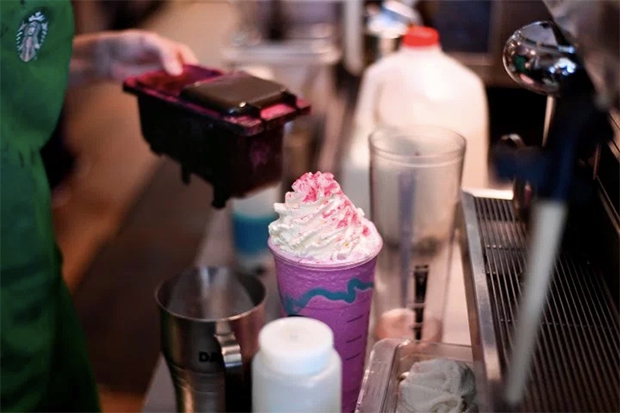
(Starbucks'"Unicorn Star Frappuccino" is hugely popular, but missed its quarterly results. Photo: Fortune)
On Thursday, Starbucks reported second-quarter revenue of $5.3 billion, up 4% from the same period last year, but below Wall Street expectations of $5.4 billion.
More worrying, however, is its same-store sales, which rose 3% in the United States and around the world this quarter, compared with Wall Street expectations of 3.5% and 3.7%, respectively.
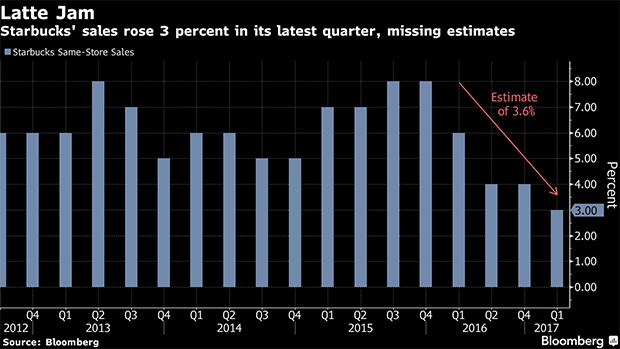
(Starbucks same-store sales growth was lower than expected, photo: Bloomberg)
The restaurant industry is depressed, but Starbucks is still trying to sell lunch
Same-store sales growth at Starbucks last quarter was also poor, when Kevin Johnson, who was not yet a CEO, said in an interview that the increase in orders placed at Starbucks' app side had led to longer waiting times for meals, which may have "scared off some potential customers."
Mobile transactions have continued to grow over the past quarter, accounting for 8% of Starbucks' trading volume in the United States.
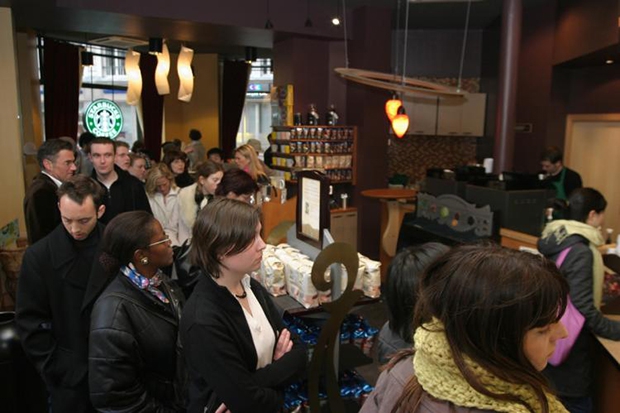
(picture from: Lester Chan)
Johnson says they have been training store staff to make them more efficient and deploy more people during peak hours. However, the excessively long pick-up line may have affected consumers' dining experience, but this may not be the main reason for Starbucks' poor same-store sales.
At the analyst meeting, Johnson pointed out that the growth of the catering industry as a whole is slowing and "it has been quite difficult for the catering industry in recent quarters." Lunch sales in American restaurants fell by 2% in 2016, especially among millennials, who are more likely to replace formal lunches with fruit, yogurt and French fries.
To preserve consumers' stomachs, Starbucks has launched a healthy, gluten-free breakfast, a $8 easy lunch, and this month launched a new lunch menu, Mercato, which offers take-out sandwiches and salads.

(picture from: Chicago Tribune)
Starbucks' rival McDonald's has benefited from expanding its breakfast range and beverage promotions. McDonald's global same-store sales rose 4% in its latest quarterly results, higher than analysts had expected. However, compared with McDonald's, the image of Starbucks cafe is popular, and consumers are obviously not used to using it as a dining place.
The impact of e-commerce on retailing has also affected Starbucks. With the rise of e-commerce, the number of shopping trips is declining. The number of people in shopping malls in the United States has dropped by 50% in three years (2010-2013), while Starbucks, which has a large number of stores in the mall, has inevitably been affected.
"the retail industry is crumbling before our eyes." Johnson said on an analyst conference call.
Membership programs and employment of refugees
The report attributed the increase in same-store sales in the United States to a 4% increase in customer unit prices, which is related to Starbucks' new membership program.
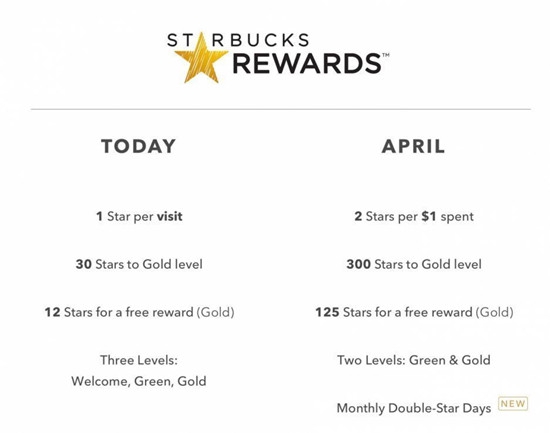
(picture from: consumerist)
Last year, Starbucks made some changes to its membership program, changing its method of earning points from the number of times it spent to accumulating according to the amount of money spent. The move reduces the previous split of orders, with many consumers buying more expensive products or choosing to make orders in order to accumulate points, driving up customer unit prices, but also reducing transaction volume by 2 per cent.
In addition, some analysts believe that Starbucks' move to hire refugees may have had a negative impact on its performance.
Former Starbucks CEO Schultz stepped down in April, but before leaving office, he dug a modest hole for his successor, Johnson.
Earlier this year, Schultz announced that the company would hire 10,000 refugees around the world over the next five years. The move triggered a backlash from many consumers and tarnished Starbucks' image.
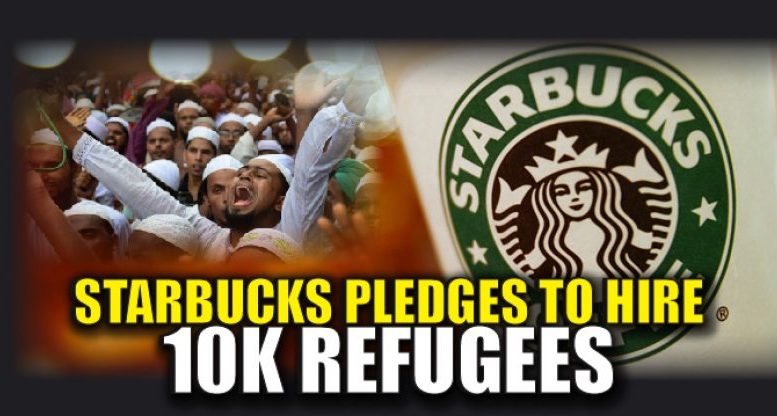
(picture from: Blingnews)
In an effort to quell consumer discontent, Starbucks promised at a shareholder meeting in March that it would hire more US veterans and their spouses, which is expected to reach 25000 by 2025. Over the next five years, Starbucks also plans to open 100 more stores near major U. S. military bases. These actions may restore the hearts of some consumers.
Amid the dismal results, the highly anticipated Chinese market gave Johnson some comfort: transaction volume increased by 6%, driving same-store sales up 7%. Johnson is optimistic about the future performance of the two major markets in China and the US:
With the accelerated performance of the US market throughout the quarter and the strong performance of the Chinese market, we believe that revenue will achieve strong growth in the second half of the year and beyond.
It is worth mentioning that Starbucks announced that it will no longer announce performance targets in future financial results, and expects annual sales growth to be lower than the original forecast of 8-10%. Starbucks cut its growth forecast once in January and originally expected double-digit growth this year.
Important Notice :
前街咖啡 FrontStreet Coffee has moved to new addredd:
FrontStreet Coffee Address: 315,Donghua East Road,GuangZhou
Tel:020 38364473
- Prev

Coffee shop design appreciation | 9 unique creative designs of modern coffee shops
Everyone has a dream of opening a shop. Is it a coffee shop or something? Today, we share nine unique examples of modern coffee shops. 1.Little Hugh, a small coffee shop on the outskirts of Melbourne, has geometric walls and ceilings, in contrast to thick gray-black birch panels and rich black lines. 2.Code Black Cafe
- Next
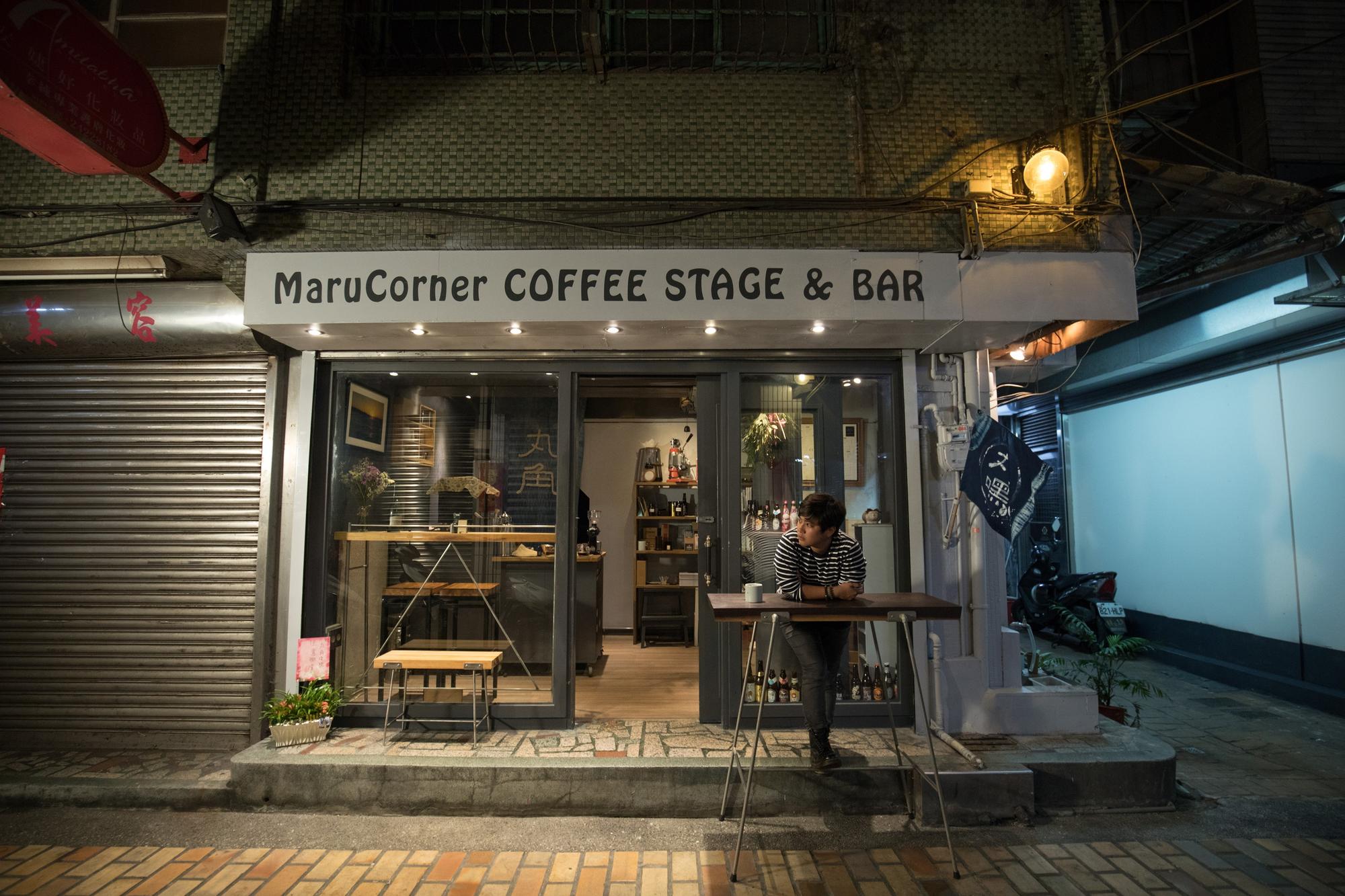
I walked into the alley to find six hidden cafes in Keelung.
Keelung's coffee culture started very early, which belongs to the prosperous history of a port. The old Keelung people told us that the open cafe created the Keelung feelings of the old city with living rooms. In the sea breeze, I climbed over the hill and into the path, and found that there were so many hidden cafes in this small city near Hong Kong. MaruCorner Coffee Stage Bar pill
Related
- What documents do you need to go through to open a coffee shop? coffee shop coffee shop certificate processing process
- How to purchase Coffee beans in small Cafe how to choose a suitable supplier for domestic Coffee supply Company
- How to drink Starbucks Fragrance White Coffee? how to make Australian White Coffee? what Italian coffee beans are recommended?
- The Story of Flora Coffee: the name of Flora Coffee Bean and the implication of the Flowers on Florna Coffee
- How much does a cup of coffee cost? How much is the profit of a cup of coffee? What is the profit of the coffee shop in a year?
- Yunnan small Coffee, known as "fragrant Coffee", introduces the characteristics of Alpine Arabica Coffee producing areas in Yunnan, China
- 2023 latest Starbucks full menu price list how much is a cup of Starbucks coffee what is better to drink the most popular hot and cold drinks recommended
- Starbucks different kinds of Coffee Price list Starbucks menu 2023 Top Ten Best drinks in Starbucks
- Starbucks Spring praise Comprehensive matching Coffee Bean theme Story Packaging implication and taste description
- The cost of a cup of coffee latte American coffee cost price and selling price

